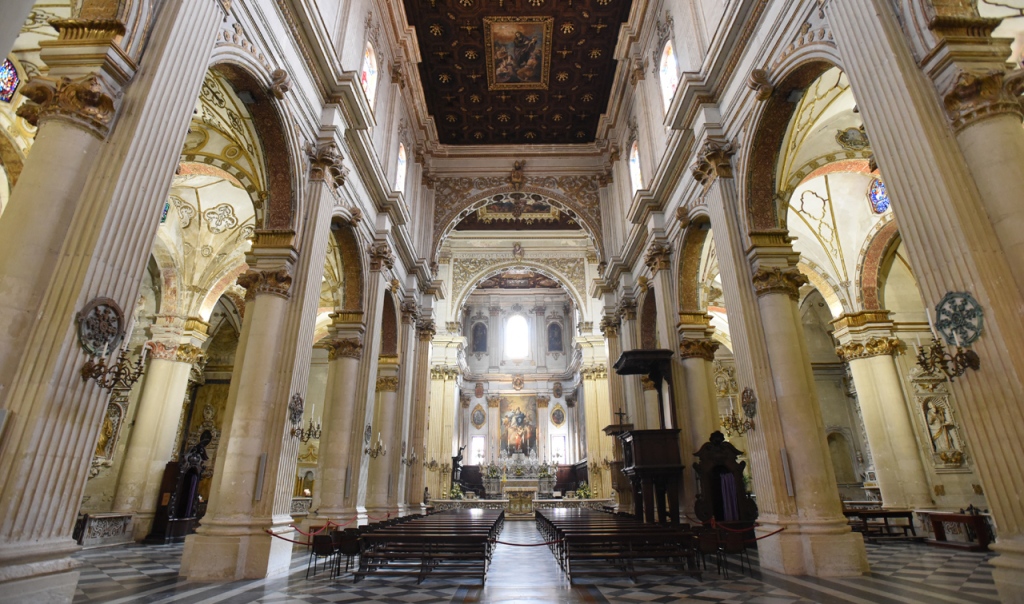By Francesco De Masi and Donatella Porrini

Given the threat of natural disasters to Cultural Heritage, this paper aims to analyze the diffusion of insurance contracts among Italian Cathedrals. As effective countermeasure against catastrophes, this risk management strategy is evaluated with the aim to contribute to the scientific debate on finding out how to protect Cultural Heritage.
Natural disasters represent a major threat to Cultural Heritage, especially considering that meteorological, hydrogeological and climatological events have been growing worldwide in the last decades due to the climate change phenomenon. Therefore, it is more necessary than ever to provide risk management strategies to deal with the effects and consequences of future disasters and concerning the protection of Cultural Heritage, a relevant role could be played by insurance instruments, as recommended at a European level.
In this direction, we propose an analysis of the role of insurance in the case of Italian Cathedrals, not yet explored in literature, with the aim to contribute to the scientific debate on finding out how to protect Cultural Heritage.
Cathedrals represent one of the most important components of Cultural Heritage, because they are characterized by a great artistic, historical and religious relevance. What is more, Cathedrals are important from another perspective. They are not only cultural goods, as said before, but they also contain relevant cultural goods, such as paintings and monuments. All these elements meet the need for representation and proof of Jesus’s and Saints’ lives, in a doctrinal vision. Indeed, Cathedrals are built not only to be admired from the outside but above all to embrace the community of believers.
Cathedrals have also a social function not only for their geographic collocation (in many cases, they are in the center of the cities) but also for their essential role as meeting points for the community, as well as marks of local identity. This aspect helps to create a sentiment of social cohesion and sensitize people to their preservation and respect, as a landmark for the local community and a fulcrum for the urban system.
Because of their intrinsic values, Cathedrals need to be preserved in a special way. They represent a manifestation of past human activities and help people to better understand their history and culture. They are part of our history and culture: having inherited this heritage from the past, it is absolutely important to safeguard it for future generations. Concerning the examined case, safeguarding Cathedrals means not only enhancing the historical monument but also all the intangible elements that are intrinsic to this type of cultural asset.
In this specific case of study, the role of insurance emerges as a particularly suitable tool in the risk management of a so huge Cultural Heritage, both from an ex-ante and ex-post point of view. The former, because it allows to make an in-depth analysis about vulnerability aspects and the exposure to disaster risks, necessary for the calculation of the premium; the latter because it allows to benefit from coverage for the damages and the consequent reconstruction.
However, to evaluate the role of insurance as a risk management tool it has to be taken into account that the insurance market is not a perfect market, in particular for the presence of information asymmetry that gives rise to adverse selection, moral hazard and charity hazard. These three situations are summarized as follows:
Table 1. Factors influencing the Efficiency of an Insurance system

Considering Table 1, the purpose of our research is to evaluate the recourse to the insurance market of Italian Cathedrals and whether this choice takes into account the cultural and religious significance that adds to the importance of the safety of the Cathedrals.
We use the data out of a survey based on a specific questionnaire distributed, from May to July 2018, to all the Italian Dioceses through their official email address (see for details read here).
Based on the answers, 62% of the Italian ecclesiastic administrators underwrote an insurance policy to cover the damages deriving from natural disasters. What emerged is that there is a high perception of the vulnerability and good knowledge about how to manage natural disasters risks. This demonstrates the sensitivity of the ecclesiastic world towards the protection of their historic-artistic-religious heritage.
Moreover, the insurance system appears to be efficient in relation to the adverse selection, moral hazard and charity hazard issues. In other words, this means that all traditional problems linked to the low diffusion of insurance have been overcome, in this specific case, thanks to their awareness about the importance of directly intervening to safeguard Cathedrals.
Indeed, Cathedrals cover a relevant role in Italian Cultural Heritage and this leads us to highlight the importance of insurance, as a private solution that can be adopted in order to cover the damages deriving from natural disasters. Through the spread of this kind of intervention, it should be possible to efficiently safeguard Cathedrals as well as all other cultural goods, enhancing the importance Cultural Heritage has in our society.
About the authors:
Francesco De Masi is a PhD student of Economics, Management and Quantitative Methods at the University of Salento, Department of Economic Science.
Donatella Porrini is Associate Professor of Economic Policy at the University of Salento, Department of Economic Science.
This article is based on:
De Masi, F., & Porrini, D. (2020). Cultural Heritage and Natural Disasters: The Insurance Choice of Italian Cathedrals. Journal of Cultural Economics. https://doi.org/10.1007/s10824-020-09397-x
About the image:
Leave a Reply